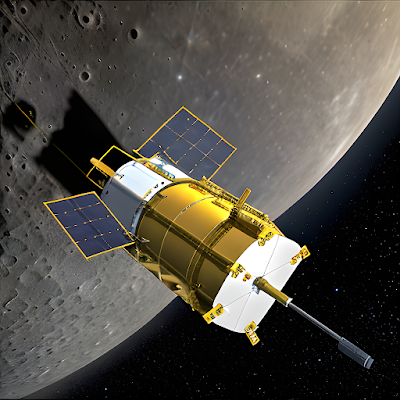In the ever-expanding realm of space exploration, India has once again set its sights on the moon with the ambitious Chandrayaan 3 mission. Building upon the successes of its predecessors, Chandrayaan 1 and 2, this upcoming mission is poised to catapult India's space agency, the Indian Space Research Organisation (ISRO), to even greater heights. In this comprehensive article, we delve into the intricate details of Chandrayaan 3, its objectives, technological advancements, and the anticipated impact it will have on lunar exploration
.
Chandrayaan 3: Paving the Way for Scientific Discovery
Chandrayaan 3, the third installment in India's lunar exploration saga, aims to further our understanding of the moon's geological and topographical features. This mission is not just about planting a flag on lunar soil; it's about unraveling the mysteries that have shrouded the moon for eons. By studying the moon's surface in unprecedented detail, scientists hope to gather invaluable insights into the moon's origin, evolution, and its potential as a platform for future space exploration.
Technological Marvels: Advancements in Chandrayaan 3
One of the standout features of Chandrayaan 3 is its cutting-edge technology. The mission comprises a meticulously crafted lander and rover duo, each equipped with a suite of scientific instruments. These instruments are designed to analyze the moon's soil, rocks, and atmosphere, providing data that could reshape our understanding of celestial bodies and their formation.
The Lander: A Soft Touchdown on Lunar Terrain
The lander, a marvel of engineering, is designed to execute a soft landing on the moon's surface. This delicate process requires pinpoint precision and the expertise of ISRO's brilliant minds. Equipped with state-of-the-art landing systems, the lander will ensure a controlled and secure touchdown, setting the stage for the rover's scientific endeavors.
The Rover: Navigating Lunar Landscapes
At the heart of Chandrayaan 3's scientific mission lies the rover. This sophisticated vehicle is equipped with an array of instruments, including cameras, spectrometers, and drills. These tools will enable the rover to capture high-resolution images, analyze the composition of lunar soil, and even extract core samples for further study. The rover's mobility and adaptability are a testament to ISRO's unwavering commitment to pushing the boundaries of space exploration.
Objectives: What Chandrayaan 3 Aims to Achieve
Chandrayaan 3 boasts a multitude of objectives, each contributing to our expanding knowledge of the moon:
1. Lunar Geology and Composition
The rover's instruments will conduct an in-depth analysis of the moon's surface, shedding light on its mineral composition and geological processes. This data could provide clues about the moon's history and its interactions with the solar system.
2. Water Molecules Detection
Among the mission's top priorities is the search for water molecules on the moon. The presence of water could revolutionize future lunar exploration, offering potential resources for sustaining human life and fueling deeper space missions.
3. Impact Crater Studies
The moon's surface is marked by countless impact craters, a testament to its turbulent history. Chandrayaan 3 aims to study these craters in detail, unraveling the stories they hold about the moon's past and the broader cosmos.
Anticipated Impacts: Paving the Way for Future Exploration
The data and knowledge generated by Chandrayaan 3 will undoubtedly leave an indelible mark on lunar exploration and beyond. As nations collaborate and share findings, we can expect new avenues of space cooperation and groundbreaking discoveries. The success of this mission will inspire future generations of scientists, engineers, and dreamers to continue pushing the boundaries of human achievement.


.png)





